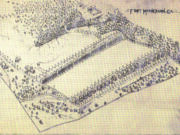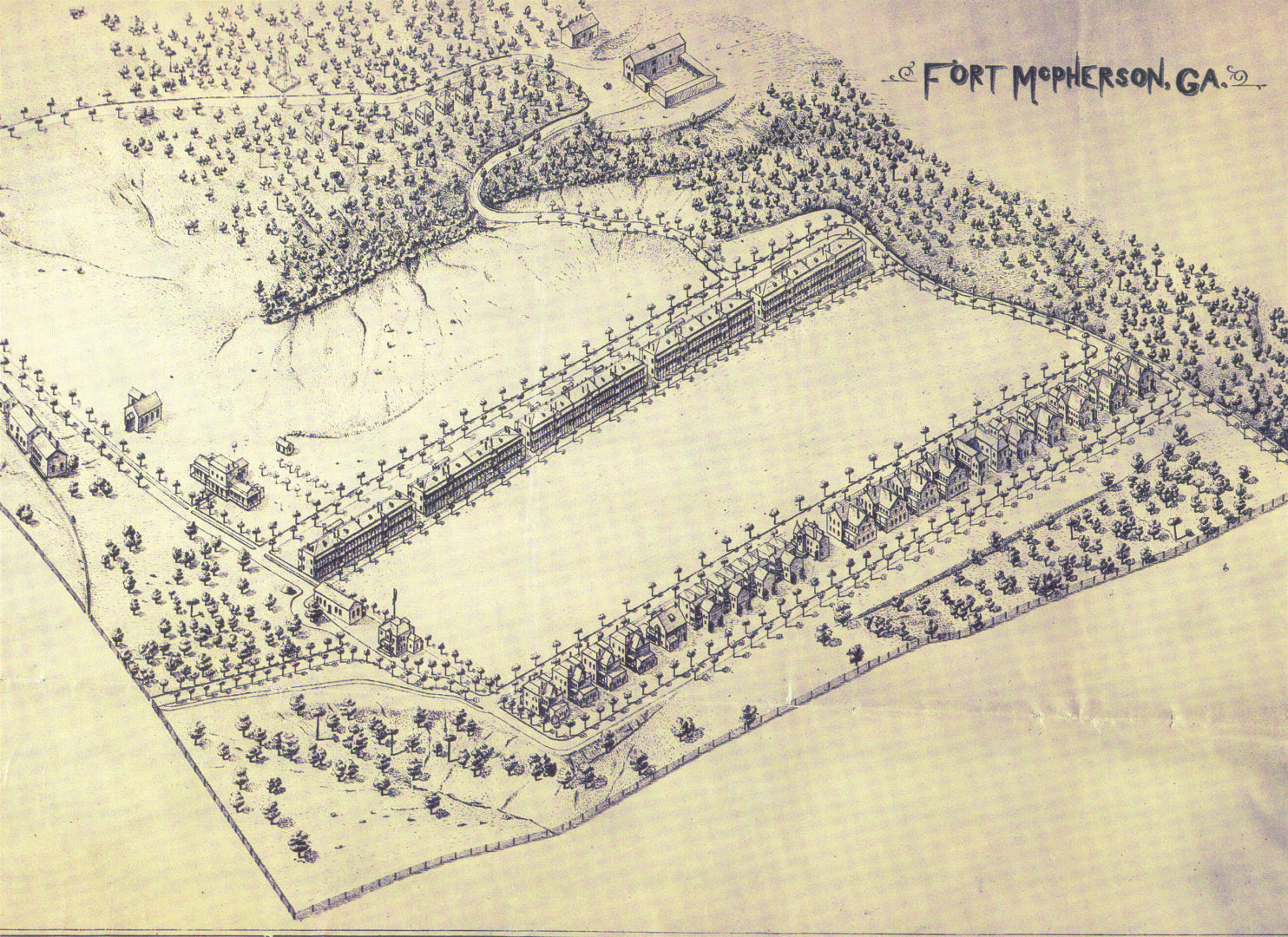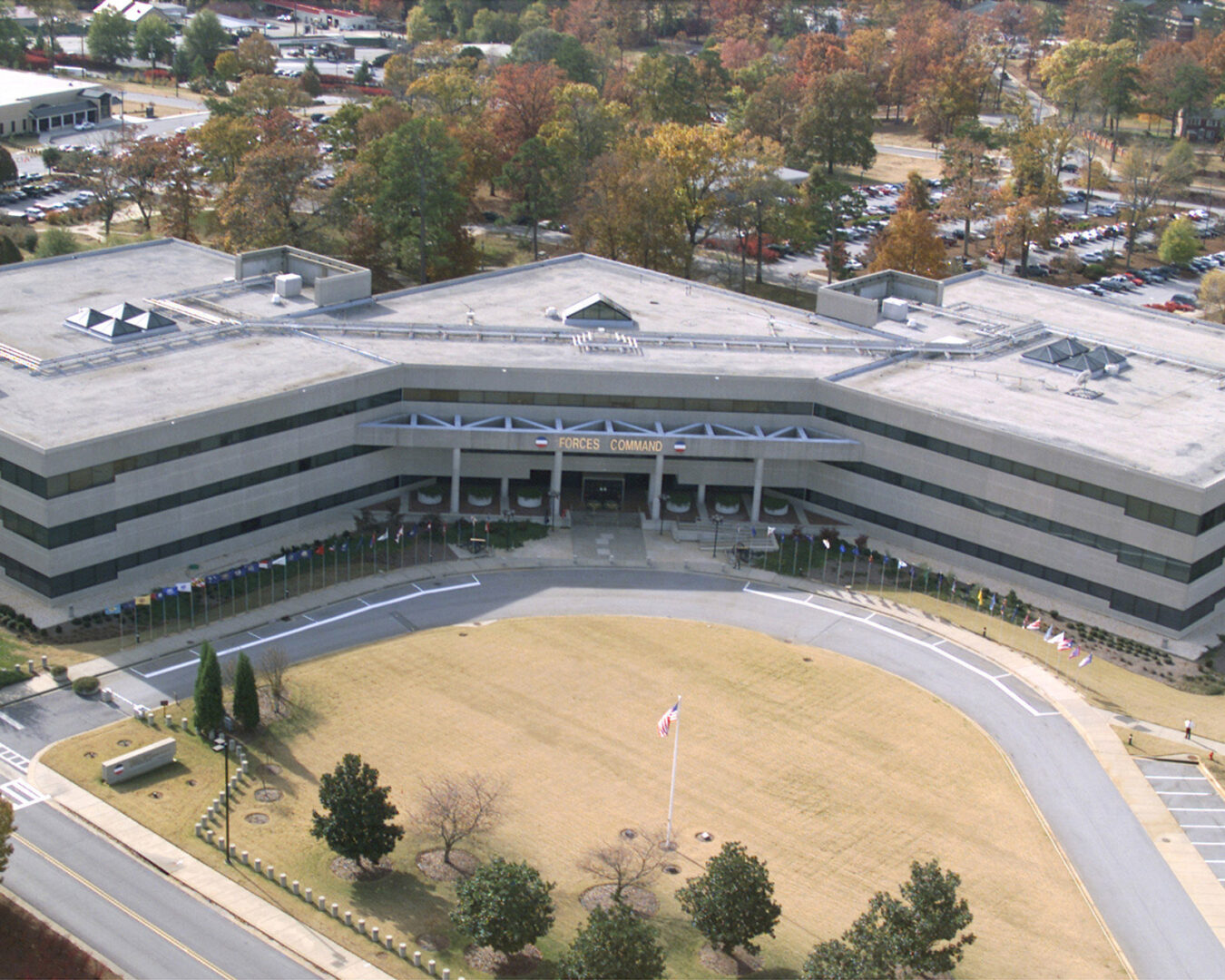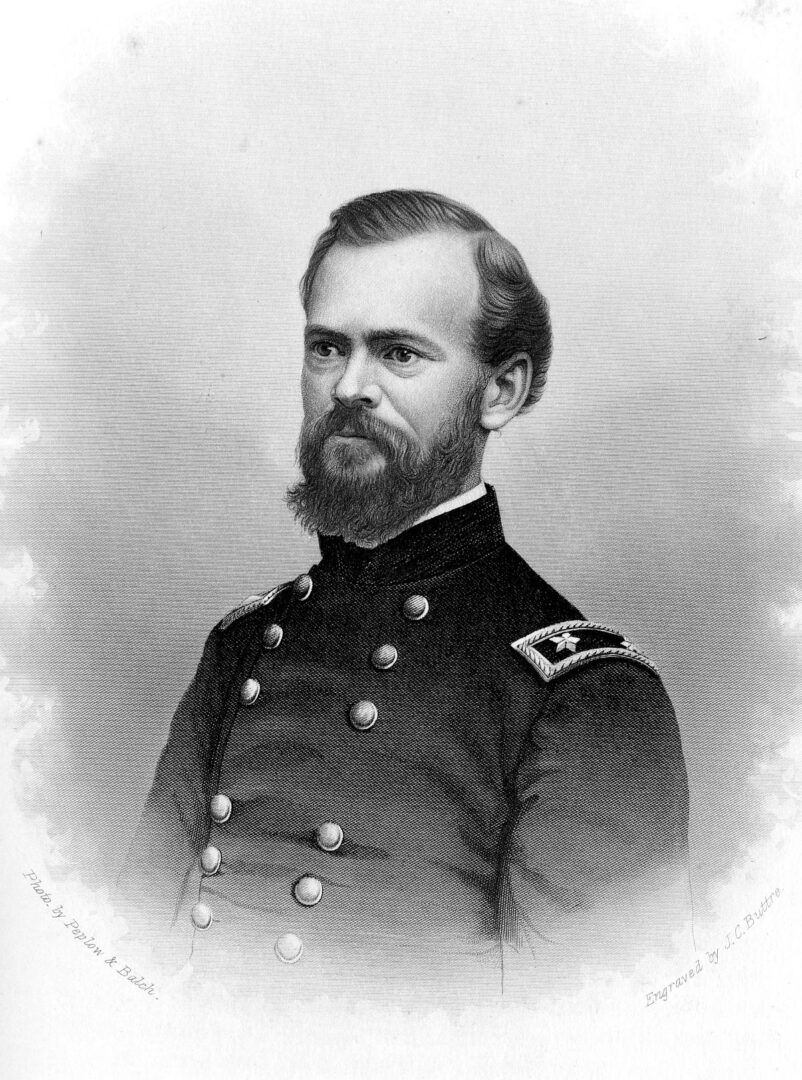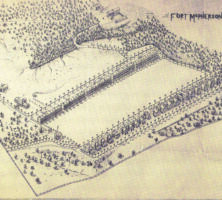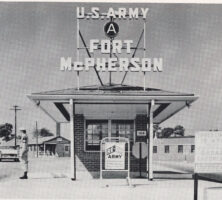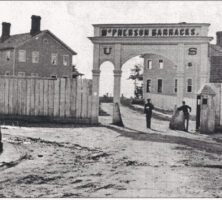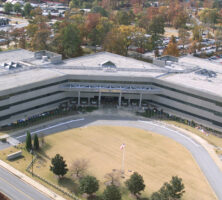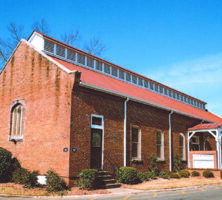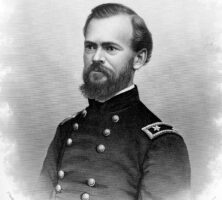Fort McPherson occupied nearly 500 acres in southwest Atlanta from 1885 until 2011. At the time of its closure, the base was one of the largest command centers in the U.S. military.
The installation was home to a major unit of the Third U.S. Army as well as the headquarters of the U.S. Army Forces Command (FORSCOM), which is responsible for the command and control, unit training, and operational readiness of the active army, National Guard, and reserve.
Before World War I
The history of military fortifications in the area dates back to 1835, when the Georgia legislature designated the pasture of Charmer Humphries as a muster grounds for the state militia. The property was the site of mobilization for Georgia’s infantry forces during the Civil War (1861-65), with barracks and a cartridge factory erected at the behest of the Confederate government. During the Atlanta Campaign, Confederate troops destroyed much of the installation to prevent it from falling into Union hands. Upon taking the city, Gen. William T. Sherman ordered the fortifications to be repaired and reinforced. Between 1867 and 1868, the U.S. Army constructed a ten-company post on part of the original Humphries land in southwest Atlanta. The installation was named in honor of Union major general James McPherson, who was killed in action during the Battle of Atlanta on July 22, 1864.
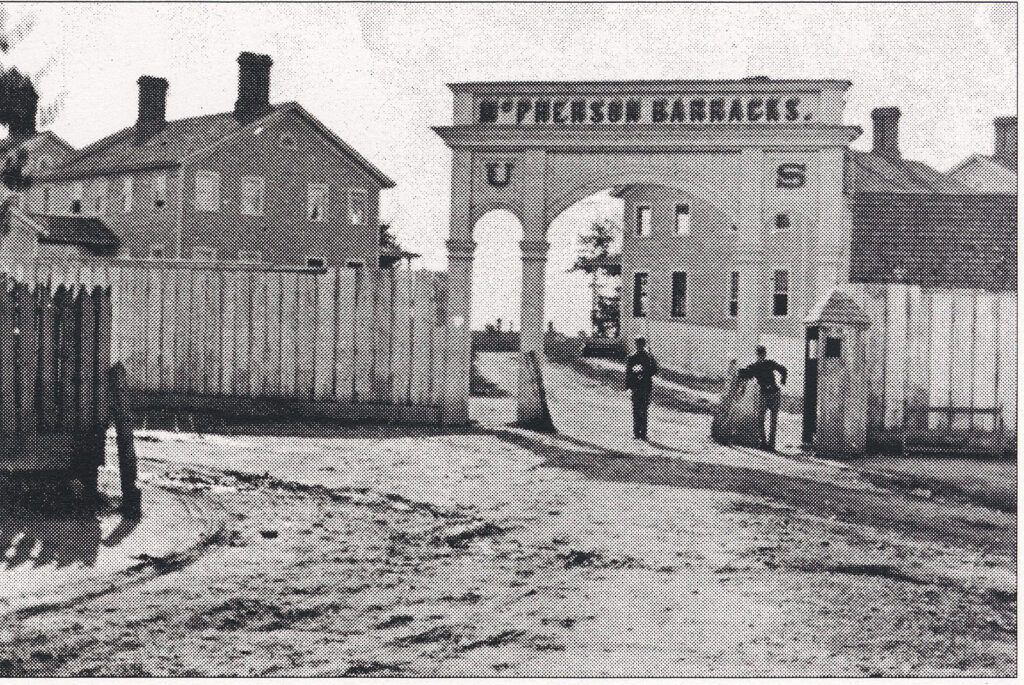
An important outpost throughout Reconstruction, McPherson Barracks later fell into disrepair. Many of its buildings were auctioned off in 1881, including the hospital building that became the Atlanta Baptist Female Seminary, later Spelman College. In 1885 Congress appropriated funds for a permanent military post at a site two-and-a-half miles south of the old McPherson Barracks. Captain Joshua West Jacobs, U.S. Army, designed Fort McPherson. Construction began in November 1886. By 1889 the first barracks were finished, and the first troops, the Fourth Artillery Regiment, moved on site. Work on the facility was completed later that year.
With the outbreak of the Spanish-American War in 1898, Fort McPherson became a major recruiting and training center. During this period the mission of the installation changed from artillery to infantry. The Fourth Artillery Regiment moved out, and the Fifth Infantry Division moved in. The huge influx of troops and supporting personnel placed a great burden on the installation’s infrastructure, and tent cities sprang up on the post. Disease was common, and typhoid broke out in the post during this period.
During the Spanish-American War, Fort McPherson served as a major military hospital and held a small number of prisoners from the Cuban campaign. At the end of the war, activity at the post slowed, and the Sixteenth Infantry Regiment, which had been stationed in Atlanta just after the Civil War, assumed garrison duty. The Seventeenth Artillery Regiment was assigned garrison duty from 1902 until 1917 and was frequently deployed to Cuba, as well as to Texas and Mexico to help subdue the Mexican bandit Pancho Villa.
World War I and After
America’s entry into World War I in April 1917 brought about yet more changes in the mission of Fort McPherson. For example, the Seventeenth provided security for numerous German military and merchant seamen interned at the post. During the war more than 1,300 prisoners were kept at the post. Fort McPherson also became an officer training camp, a mechanical repair depot, and home to General Hospital no. 6, which treated the sick sent from various training camps around the country and the wounded from the battlefields. The hospital’s capacity of 2,400 was taxed during the war, as some 10,000 wounded soldiers rotated through the wards between 1917 and 1919. To accommodate these new functions, many new structures were built, including Red Cross facilities, a chapel, schools, and the post exchange. In 1919 the hospital discharged the last of the war’s casualties and reverted to the status of a post.
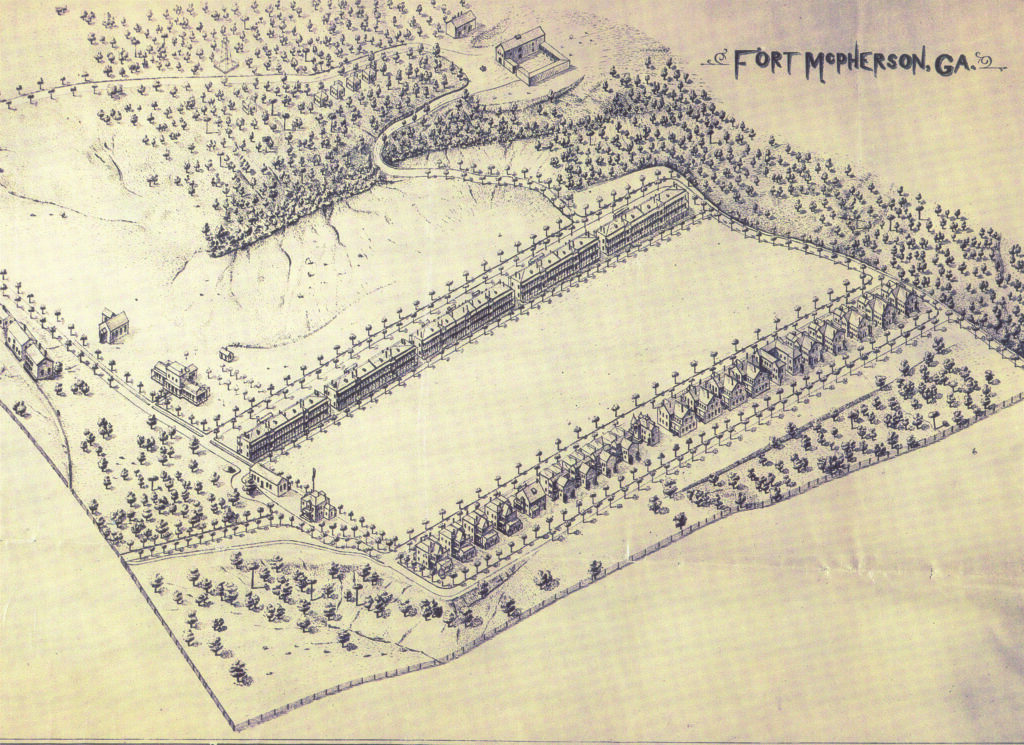
During World War I another military facility, Camp Jesup, was built next to Fort McPherson. Constructed by local civilians and German prisoners of war, Jesup served as a major center for repairing, overhauling, and reconstructing vehicles, and as a storage area for transport supplies. Jesup’s facilities included living quarters, mess halls, and administrative buildings. During the peak of war activity, nearly 4,000 civilian and 2,100 military personnel were employed at the camp. Jesup remained active after the war as a motor transport school, a general depot, and a quartermaster intermediate storage depot. Camp Jesup was deactivated on August 23, 1927.
The 1920s and 1930s were decades of continual change at Fort McPherson. Some new construction took place on the site. Units came and went, including a battalion of the Sixth Infantry Regiment and the Twenty-second Infantry Regiment. The Twenty-second served on the post from 1922 to 1941, longer than any other unit. The U.S. Army Fourth Corps Headquarters and the Eighth Infantry Brigade were stationed at Fort McPherson during the interwar years. The Georgia National Guard and Reserves also trained at Fort McPherson during this time. The Great Depression years saw the introduction of the Civilian Conservation Corps (Division B, CCC Headquarters) at Fort McPherson. The Twenty-second Infantry units stationed at the post delivered two weeks of basic training to all new CCC enrollees, who were then sent to work camps throughout the region. The CCC program was suspended in early 1942, after the outbreak of World War II (1941-45).
World War II and After
A modern hospital, general supply depot, recruit reception center, barracks, offices, mess hall, guest houses, officer quarters, post exchange, chapel, and two warehouses were built at the post in 1940. In anticipation of the U.S. entrance into the European conflict, Fort McPherson began to increase its recruiting and training activity. In 1940 thousands of recruits began to stream into the post. In December 1941, after the attack on Pearl Harbor, activity at the post reached a record pace. The motor pool became the main shipping and receiving site in the Fourth Service Command for thousands of tactical and administrative vehicles. The entire site was covered with vehicles assigned to this division.
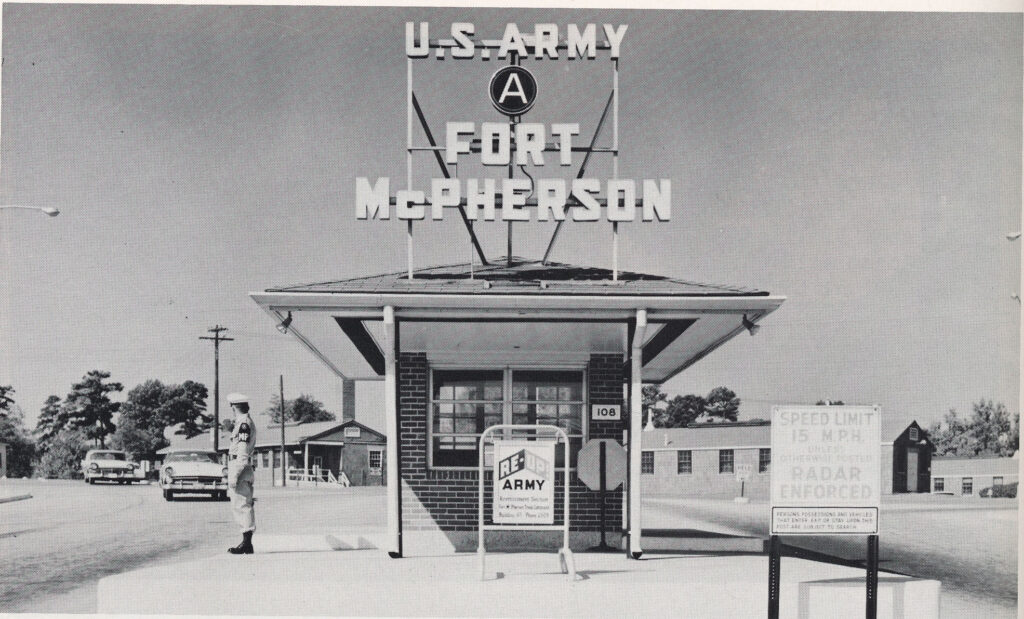
Medical personnel attached to the post hospital began conducting research on tropical diseases and insecticides. On July 11, 1944, Fort McPherson was made one of the nineteen nationwide Army Personnel Centers. Soldiers entering and leaving the service flowed through the post. This activity continued after the war. From September 1945 through February 1946, an average of 20,000 soldiers were discharged every month at Fort McPherson’s Separation Center, which closed in mid-1946.
After World War II, Fort McPherson continued its role as a major command post. The Third Army was headquartered at the fort from 1947 to 2001, and a unit remained there until the base closed. FORSCOM headquarters was activated on July 1, 1973. Before and during the Persian Gulf War (1990-91), the Third Army coordinated all ground forces involved and oversaw the U.S. Army presence in Southwest Asia. Allied with these missions, the U.S. Army Reserve Command was activated at the post in 1997.
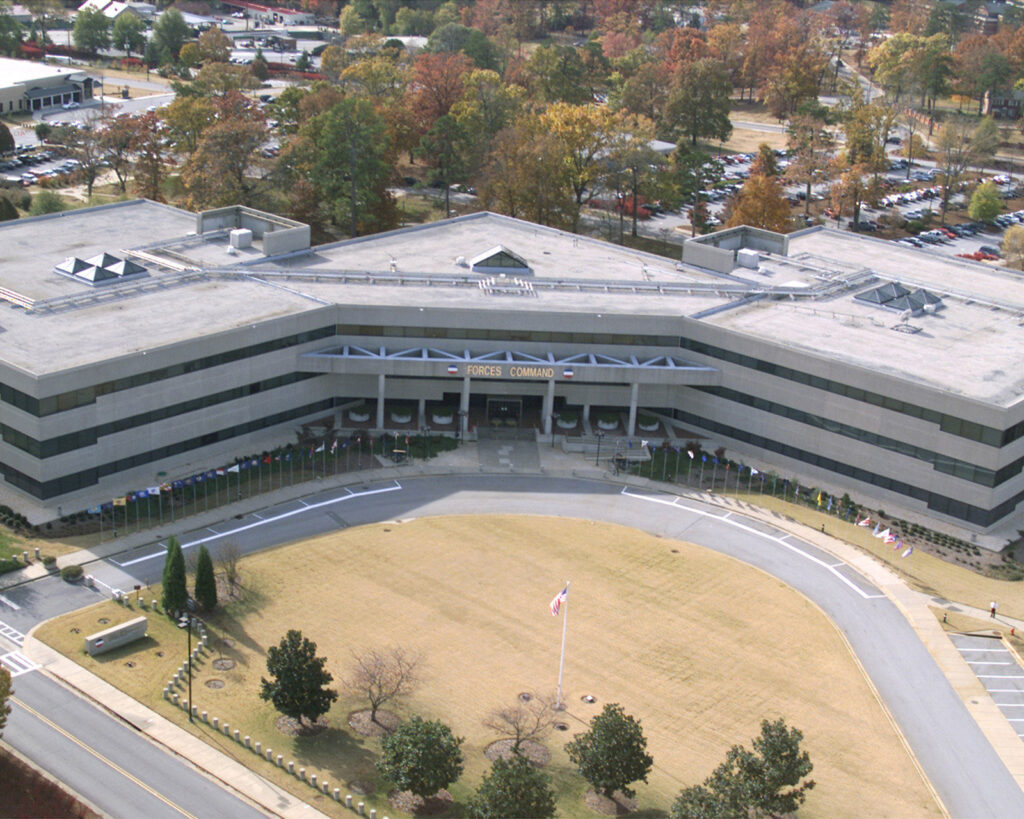
In 2005 the federal government announced that Fort McPherson, along with nearby Fort Gillem and the Navy Supply Corps School in Athens, would be closed as part of its Base Realignment and Closure plan. An exit ceremony was held at the base on June 3, 2011, and by September all troops had reported to their new posts. The Third Army moved to Shaw Air Force Base in South Carolina, while FORSCOM and the U.S. Army Reserve Command transferred to Fort Bragg in North Carolina.
In 2015 filmmaker Tyler Perry purchased a majority of the base’s land for use as a film studio; when the studio opened three years later, it featured twelve soundstages and multiple standing sets, some of which preserved Fort McPherson’s historic features.


